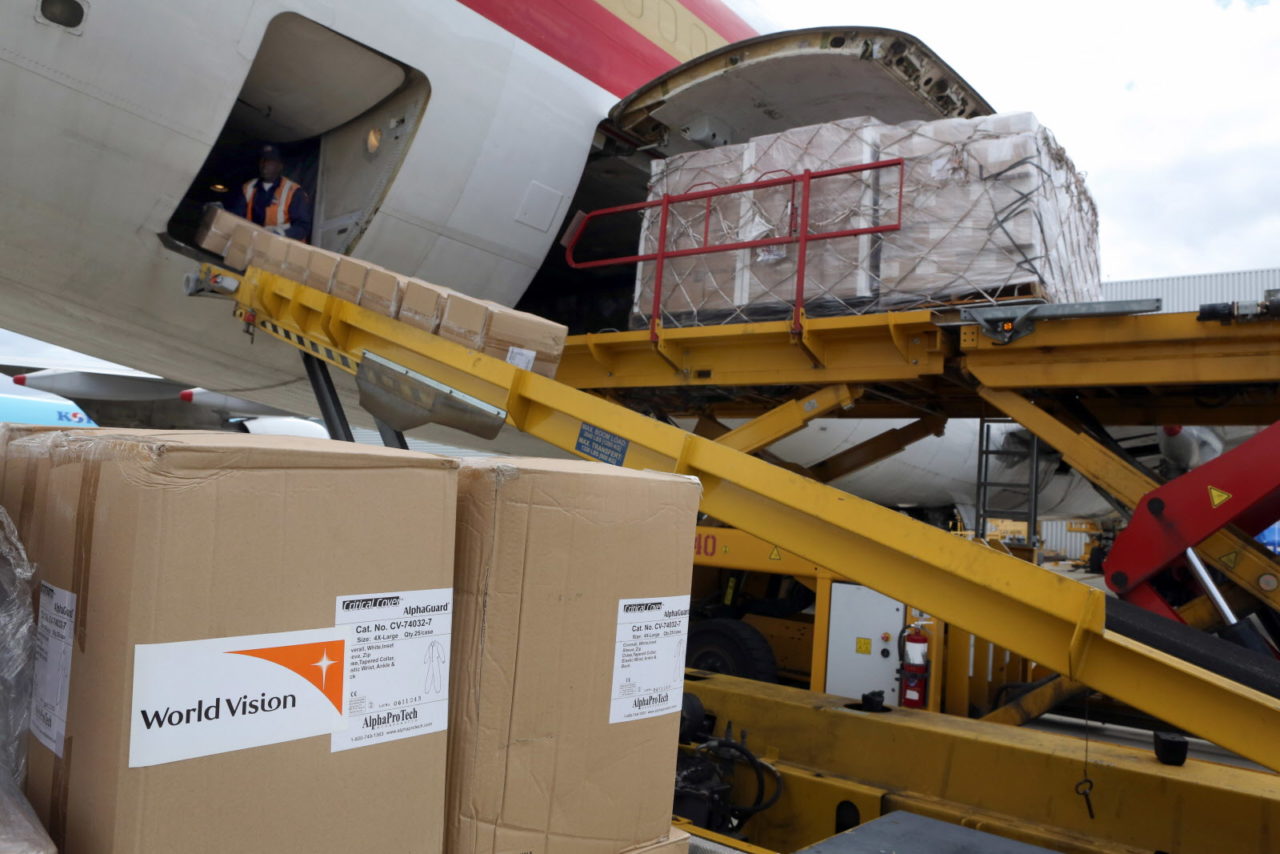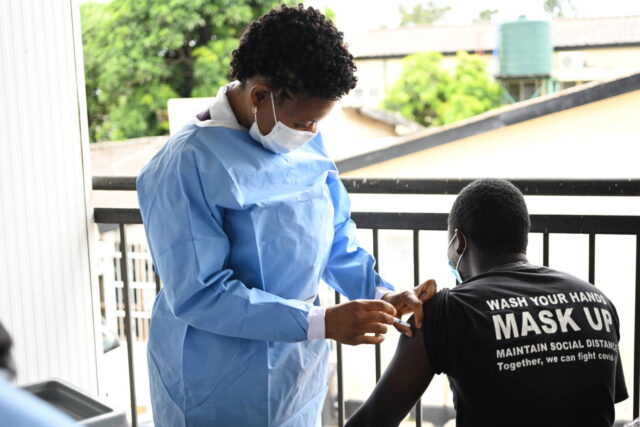Ebola, or Ebola virus disease, is a highly contagious and potentially deadly illness caused by ebolaviruses. It has gained worldwide attention because of severe outbreaks in Central and West Africa. Ebola can devastate communities, but it is possible to reduce its spread and impact through better understanding, prevention, and coordinated efforts.
Ebola virus disease: Facts, FAQs, and how to help
- Fast facts: Ebola
- What is Ebola?
- What are the symptoms of Ebola?
- Is Ebola treatable?
- How does World Vision respond to Ebola outbreaks?
- What was World Vision’s response to the Ebola outbreaks in 2014?
- How can I help Ebola survivors and people affected by viruses?
Fast facts: Ebola virus disease
- Ebolavirus is highly contagious and can cause Ebola virus disease (EVD), formerly known as Ebola hemorrhagic fever.
- The disease is initially transmitted to humans from wild animals and subsequently spreads by human-to-human transmission through direct contact with the blood, secretions, organs, or other bodily fluids of infected people. It can also be transmitted through contact with surfaces contaminated with these fluids.
- In 1976, public health officials identified ebolaviruses during two successive outbreaks of lethal hemorrhagic fever in distinct regions of Central Africa. The initial outbreak occurred in a village near the Ebola River in the Democratic Republic of the Congo (DRC), giving the virus its name. The second outbreak occurred an estimated 500 miles away in what is now South Sudan.
- Ebola outbreaks primarily occur in Central and West Africa, with occasional cases in other regions. Notable outbreaks include those in West Africa from 2014 to 2016, the largest and most complex outbreak, and in the DRC from 2018 to 2020.
- The most recent outbreak, caused by the Sudan ebolavirus, affected nine districts in Uganda in 2022, according to the World Health Organization (WHO). It tragically resulted in at least 77 lives lost, with a total of 164 cases. Uganda health officials declared the end of the outbreak on January 11, 2023.
What is Ebola?
Ebola virus disease, formerly known as Ebola hemorrhagic fever, is a rare and often deadly disease in humans caused by infection with one of four ebolavirus strains: Zaire, Sudan, Bundibugyo, or Taï Forest.
What are the symptoms of Ebola?
Symptoms of Ebola virus disease include high body temperatures, headache, abdominal pain, diarrhea, vomiting, and both internal and external bleeding, such as from gums and stool.
It can be challenging to distinguish Ebola from other diseases, such as malaria, typhoid fever, and meningitis. Symptoms typically appear from 2 to 21 days after contracting the disease. People who have contracted the disease can’t transmit it to others until symptoms appear.
Is Ebola treatable?
While there is no proven, licensed treatment for Ebola, early symptom management and intravenous fluid hydration can improve survival rates. Ongoing research efforts are exploring potential treatments, including antiviral drugs and immunotherapies.

How does World Vision respond to Ebola outbreaks?
World Vision responds swiftly to Ebola outbreaks by educating affected communities, supporting healthcare workers, providing child protection and psychosocial support, ensuring access to clean water and sanitation, and delivering emergency relief. We aim to help communities stay safe and resilient in the face of this deadly virus. A few of our key programming areas include:
Community education: We equip communities with information about Ebola prevention, transmission, and the importance of early detection. We help raise awareness to ensure people know how to protect themselves from the virus.
World Vision’s Channels of Hope programming: We train and equip religious leaders to share accurate information about Ebola prevention and treatment, dispel myths and misconceptions, and promote safe practices within their congregations and communities. By working with these local faith leaders, who have a great deal of influence because of how much their communities trust them, World Vision seeks to enhance awareness, reduce stigmatization, and encourage early detection and treatment of Ebola cases. The collaborative approach between faith-based organizations, communities, and health agencies has played a vital role in controlling the spread of Ebola and providing support to affected individuals and families.
Child protection: We offer psychosocial support to children who may have lost family members or been affected by the outbreak. We work to keep children safe and emotionally supported.
Healthcare support: We supply healthcare workers with medical supplies, protective gear, and training so they can safely care for Ebola patients.

What was World Vision’s response to the Ebola outbreaks in 2014?
World Vision swiftly responded to the 2014 Ebola virus outbreak in Sierra Leone. We did this through a comprehensive effort to protect children and their families. With a strong focus on health and safety, awareness and prevention, safe burials, and social and economic recovery, World Vision played a crucial role in combating the epidemic. Our initiatives ranged from providing personal protective equipment and hygiene kits to launching extensive education campaigns and training local leaders on virus prevention. Through our efforts, we successfully prevented Ebola-related deaths among the children and families we supported. And we contributed significantly to the containment of the outbreak. Our approach encompassed immediate medical needs, long-term recovery, and community resilience.
When Ebola struck Sierra Leone in 2014, World Vision was already working in 25 program areas. We were serving an estimated 58,000 children and their families. Building on 20 years of community development in Sierra Leone, we joined communities, partner agencies, and every level of government in the battle against Ebola.
During the emergency response, World Vision reached 1.6 million people through these and other initiatives:
Health and safety
- World Vision delivered 5.4 million personal protective equipment items. These included suits, gloves, face masks, and goggles to Sierra Leone hospitals and health centers, and gave hygiene kits to schools. Long-time World Vision partner McKesson, one of the largest healthcare service companies in the U.S., donated 200 pallets of medical relief supplies to help meet Sierra Leone’s needs for five months.
Awareness and prevention
- World Vision–trained staff organized massive awareness, prevention, and education campaigns to protect children from the disease through radio and house-to-house information sharing.
- Staff trained more than 2,000 influential local leaders — including Christian and Muslim clerics, traditional faith healers, and frontline community health workers — to deliver messages on Ebola awareness and prevention. “When so many communities face such terrible suffering, the church must be there to combat fear, stigma, isolation, and hopelessness with both love and tangible support,” said Bruno Col, then–World Vision communications director in West Africa.
Safe and dignified burials
- World Vision and two other aid agencies organized and trained 800 burial teams. These teams carried out 29,201 burials to prevent the spread of the disease while ensuring families had the opportunity to mourn and respecting their cultural beliefs.
- World Vision and its humanitarian partners, along with burial workers like 53-year-old Ebola survivor Maseray Kamara, were awarded the 2015 Bond International Humanitarian Award. The award recognized the courage and care of those on the front lines of Ebola prevention during the outbreak. “This recognition is a tremendous encouragement after all the suffering we have seen in Sierra Leone and across West Africa,” said Grace Kargbo, a World Vision Sierra Leone burial team manager at the time. “These brave souls have received little recognition at home and abroad. In fact, they have often been shunned, ostracized, vilified because they are burial workers.”
How can I help Ebola survivors and people affected by viruses?
- Pray: Join us in praying for all those threatened by Ebola outbreaks and the spread of other diseases and infections.
- Sponsor a child as a personal way to show God’s love to a child in need.
Jonathan Bundu, Karen Homer, Chris Huber, Heather Klinger, Denise C. Koenig, Sahr Ngaujah, and Sevil Omer, all of World Vision, contributed to this article.




